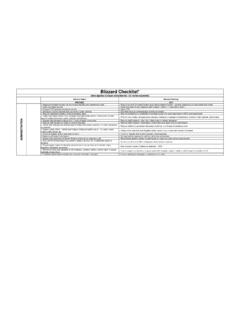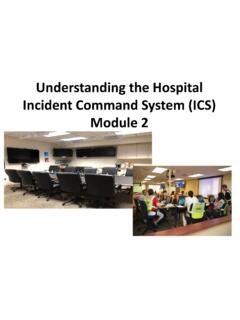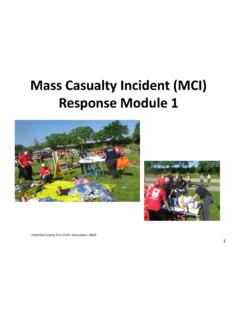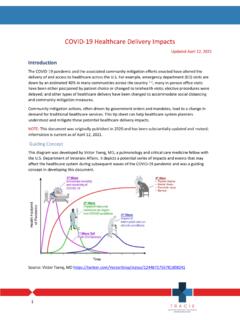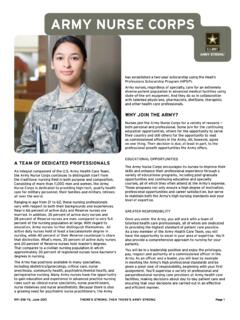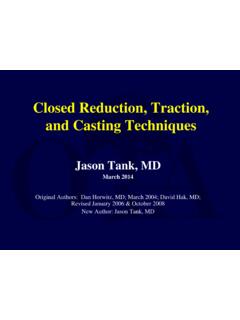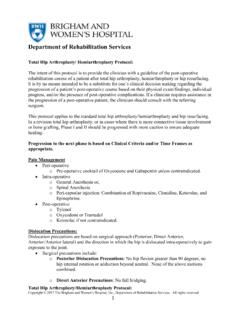Transcription of Healthcare Provider Shortages-Resources and Strategies for ...
1 Healthcare Provider SHORTAGES: RESOURCES AND Strategies FOR MEETING DEMAND November 2021 Staff shortages have been a primary challenge in the management of patient surge during the COVID-19 pandemic and other disasters. Healthcare providers may become ill, family concerns may decrease the ability of staff to work extra hours, school closures may inhibit staff from performing normal duties, and physical and emotional fatigue causes burnout. Many Healthcare workers are reducing hours, leaving the field, or taking contract jobs, further depleting the workforce, and increasing the stressors on remaining employees.
2 In a recent survey of leaders from 100 large and private sector hospitals, nearly half of respondents had to reduce inpatient capacity due to nursing shortages. Ongoing and close coordination with local, county, state, territorial, and tribal public health agencies, and coordination among Healthcare facilities to ensure staffing remains at functional levels are vital throughout the course of the COVID-19 pandemic and other disasters. ASPR TRACIE worked with Healthcare workforce subject matter experts to identify resources and Strategies that decision-makers can use to optimize Healthcare workforce assets, assess ongoing staffing needs, and identify resources to meet these needs.
3 Practical considerations and resources are categorized into four actions critical to Healthcare workforce planning: 1. Quantify Healthcare Workforce Needs 2. Implement Strategies to Maximize the Workforce 3. Supplement the Healthcare Workforce 4. Support the Healthcare Workforce Links to additional resources are included in the COVID-19 Workforce Virtual Toolkit: Resources for Healthcare Decision-Makers Responding to COVID-19 Workforce Concerns. 1. Quantify Healthcare Workforce Needs Practical considerations Project Healthcare workforce needs by cadre, type, and skill level.
4 Access these sample workforce staffing calculators: COVID-19 Health Workforce Surge Planning (UCSF) COVID-19 Clinical Staff Projection Calculator (Providence St. Joseph Health) COVID-19 Staffing Needs Calculator (COVID Staffing Project) COVID-19 Staffing Projections Calculator (COVID Staffing Project) Reassess regularly as the situation evolves by monitoring several factors: How many additional staff are needed due to current census and acuity? How many staff members are unavailable due to factors such as COVID-19 illness, health concerns ( , pre-existing conditions precluding them from high-risk work), and childcare needs?
5 How many additional Healthcare providers are available from immediately accessible temporary staffing solutions? How are different categories of staff affected? Can some duties be shifted safely to other staff members to reduce the burden on specific groups? Resources Hospital Surge Capacity Tools The General Surge Capacity Model provides 1- to 30-day ahead projections of an individual hospital s demand for medical and intensive care unit beds, ventilators, personal protective equipment (PPE), medication, and staffing. The Advanced Model offers expanded functionality.
6 Hospital Preparedness for a COVID-19 Surge: Assessment Tool This 11-page checklist focuses on systems and processes for monitoring and improvement. Topics include staffing, space, supplies, infection control, staff well-being, and structures for planning, decision-making, and communications. Free registration required to access the tool. 2. Implement Strategies to Maximize the Workforce Practical considerations Enable the expansion of clinician-to-patient ratios by assigning clinical providers to the most specialized care ( , medication administration, ventilator management) and delegating non-specialized and personal care provision ( , feeding, bathing) to supporting staff.
7 Reassign staff from within the system/facility ( , from outpatient clinics and surgery services) to units with pressing staffing needs. Temporarily supplement with staff from contracted staffing agencies. RELATED ASPR TRACIE RESOURCES COVID-19 Workforce Solutions from the Field Hospital Intensive Care Unit (ICU) Surge Training Resources Hospital Operations Toolkit Capacity: Staffing The Role of Support Services during COVID-19: Experiences from the Field Up-Training Resources for Healthcare Staff during COVID-19 Surge Consider adopting The Society of Critical Care Medicine s Tiered Staffing Model for COVID-19.
8 Under this model, hospitals augment critical care staffing utilizing a tiered strategy whereby non-ICU staff augment experienced ICU staff. Non-ICU-trained staff from all disciplines ( , physicians, nurses, and advanced practice providers) and experienced perioperative clinical staff ( , surgeons, anesthesiologists, certified registered nurse anesthetists and assistants, operating room and post- anesthesia care unit nurses) can support critical care services with and without intensivists. Provide necessary training to support the return of clinical providers in administrative positions to clinical positions.
9 The ASPR TRACIE Topic Collection Training and Workforce Development and Modules for Nurses in Acute Care Settings includes resources to bolster clinical staff capacity. The Society of Healthcare Epidemiology of America and SHEA/CDC Outbreak Response Training Program (ORTP) developed a toolkit for epidemiologists, infection control preventionists, infection control teams, and others working in outbreak preparedness and response. Rapidly up-train staff with similar skill sets to those needed for specialized care. The American College of Chest Physicians provides on-demand e-Learning Modules relevant to COVID-19 pandemic.
10 The University of California, San Francisco provides links to COVID-19 Health Workforce Surge Planning resources for frontline workers. The Society for Critical Care Medicine provides on-line training resources for non-critical care providers. Be aware of workforce trends and begin planning to mitigate predicted shortages in specific job categories. Consider Strategies to Mitigate Healthcare Personnel Staffing Shortages provided by the Centers for Disease Control and Prevention (CDC). Recommendations are provided as a continuum of options for addressing shortages and meant to be implemented sequentially.



